A Plaything of Emotions with Room for Interpretation: What is a Symphony?
Beethoven's symphonies are always about messages of content, never just an artistic play of forms.
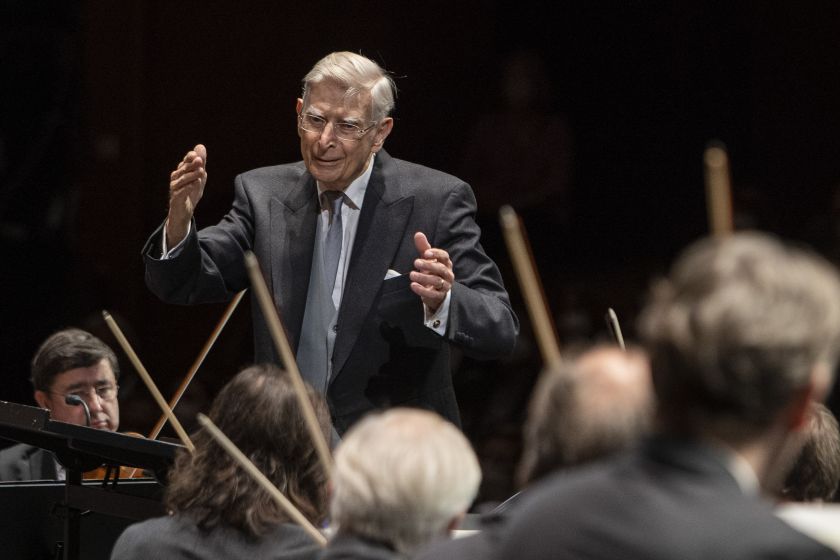
From works by Gustav Mahler to Antwon Bruckner and Arnold Schoenberg: famous conductors and their Festival programmes.
Symphonies, what else? What other instrumental musical genre would dominate the major orchestra concerts of a Festival summer? The question “What is a symphony?” is not asked. At least not by the holders of a concert subscription. Perhaps, however, this question is a bit like that about the nature of time. Everyone – as Saint Augustin already remarked half-jokingly – knows what time is – as long as no one asks them… And still, a glance at the Salzburg concert programme for 2024 raises even some cognoscenti’s eyebrows, when questioned from this perspective. Even the very first programme of the Vienna Philharmonic under Herbert Blomstedt (28 and 30 July) confronts us with the Lobgesang by Felix Mendelssohn Bartholdy. According to the conventional numbering of his symphonies, it’s his Second, even if the title, as replicated in the Salzburg programme brochure, is “A Symphony-Cantata on Words of the Holy Scripture”. In arias, chorales and ensemble movements, the choir and soloists sing the Creator’s praises, emulating the models of Bach’s and Handel’s cantatas. Three (comparatively short, given the following vocal music) instrumental introductory movements precede the vocal writing.
200 years later, music lovers have no qualms calling such works symphonies. After all, Mendelssohn’s great role model for his Lobgesang was Beethoven’s Ninth Symphony; except that in the latter case, the balance between the sung parts and those reserved for the orchestra seems a bit off-kilter. Regarding formal extravagance, Gustav Mahler pushed the boundaries even further out. In his Eighth, the chorus enters right after a brief upbeat from the organ, and approximately 80 minutes of music follow, hardly any of them without singing. Yet no one questions Mahler’s right to call this work a symphony.
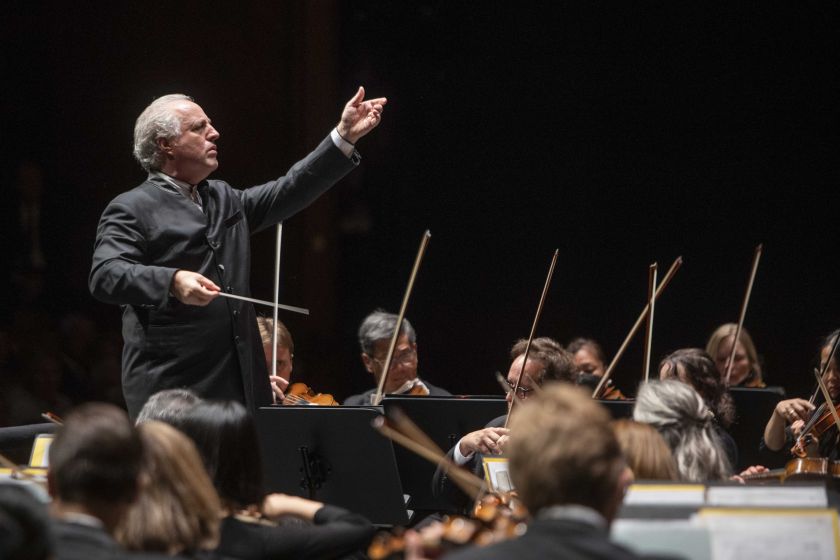
Building Worlds. Salzburg’s 2024 programme does feature three Mahler symphonies, but all of them are purely instrumental works: Numbers 5, 6 and 9. Two of them even have four movements like the classical models, to which we would have liked to refer in answering our question, if Mendelssohn Bartholdy had not distracted us. Thus, Mahler, wo began incorporating solo voices and/or choruses from his Second Symphony onwards, occasionally also made do with orchestral instruments to answer his much-quoted answer to our question: “To me, writing a symphony means building a world.” These “worlds” he built for us could not be more different from one another. The Fifth, for example, begins, unusually enough, with a funeral march, then continues in a tempestuous Allegro, followed by a Scherzo making ample use of ländler sounds. As if this were not disparate enough, there follows the ”Adagietto” – universally recognizable since its use as part of the film score to Visconti’s Death in Venice – as well as a vivacious, cheerful finale. Mahler thereby formulated an extreme contrast to the classical era’s striving for unity: while Beethoven struggled to lend a rigid structure to the content he presented in the formally overflowing Ninth, Mahler strings different building-blocks together, giving performers and audience an idiosyncratic nut to crack. Manfred Honeck has chosen the work as the main one for his guest concert with the Pittsburgh Symphony Orchestra (22 August). It is preceded by Yefim Bronfman playing Rachmaninov’s Piano Concerto No. 3; from a classical perspective, another boundary-wrecking composition – certainly not one constructed to a rigidly ordered plan.
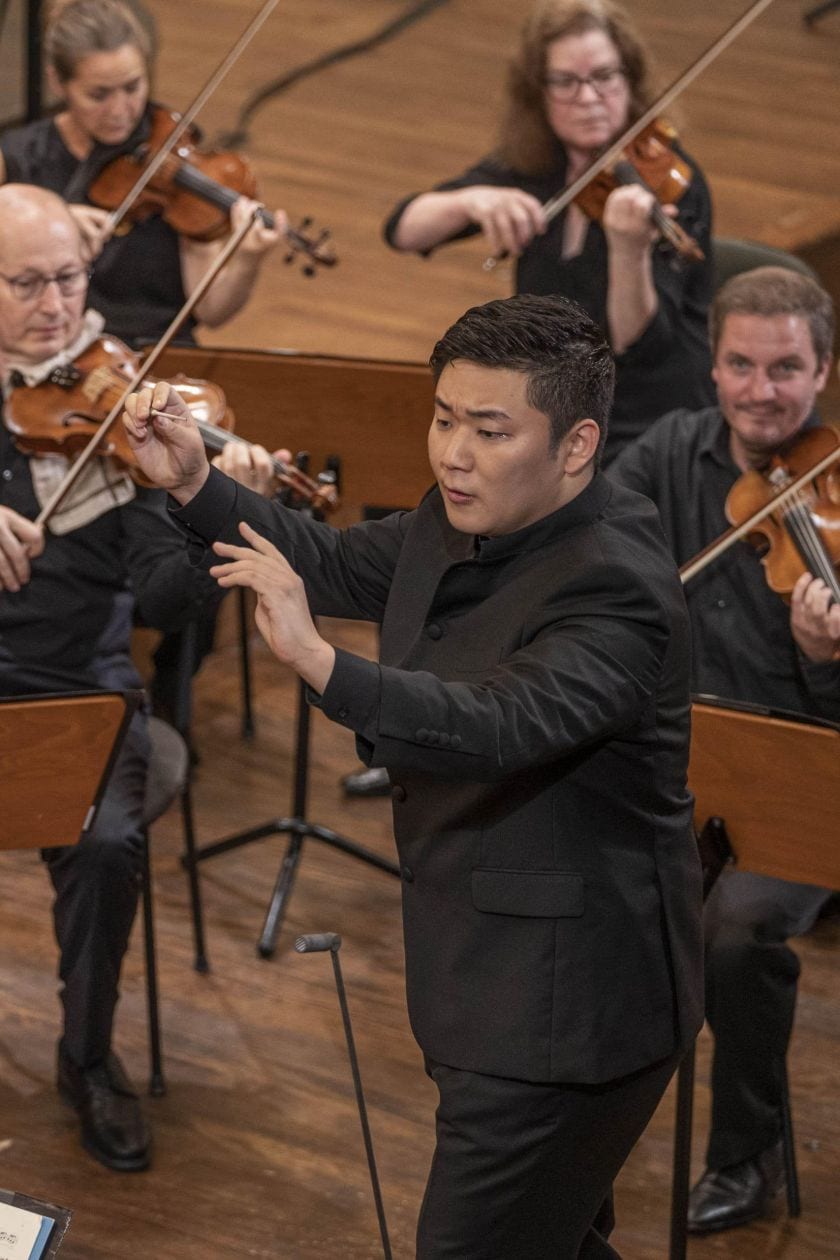
Hammer Blows. Mahler formulated quite a different concept of a symphony in his following one, the Sixth – a work that Sir Simon Rattle has conducted at many decisive moments of his career. Most recently when taking up his position as the chief conductor of the Bavarian Radio Symphony Orchestra, with whom he also marks the finale of the Salzburg Festival on 31 August: the Sixth is constructed along more traditional lines than its predecessor: however, it still storms towards an uncertain fate in its four movements.
The unusual programme is audible from the first entrance of the marching rhythm in the first movement. Even if cowbells ring out in the Andante and evoke a dream scenario – we realize their unreality in the finale, when the great hammer falls – literally: Mahler invented it as an orchestral instrument, reaping huge amounts of ridicule for the idea. However, the hammer was essential in his striving for expressivity. And yet, he cut the last, the third hammer blow when he was revising the score. In any case, the Sixth was not the end of his symphonic adventure.
The Festival also features his Ninth. Andris Nelsons will conduct it in the second programme with the Vienna Philharmonic (10/11 August). It is a work of farewell, in which violent tempests of life and love lead to an expansive Adagio which ultimately fades into nothing. It will be fascinating to have a quasi-direct comparison of this extraordinarily structured work with its formal role model: Piotr Ilyich Tchaikovsky’s “Pathétique”, undoubtably an influential model for Mahler’s Ninth, will be performed by the ORF Radio Symphony Orchestra under Hankyeol Yoon on 10 August as well.
Mahler’s other musical ancestor is Anton Bruckner, whose birth 200 years ago is celebrated during the Salzburg summer on several occasions: by the Vienna Philharmonic under Riccardo Muti with his Eighth (15, 17 and 18 August) and by the Berlin Philharmonic under Kirill Petrenko with his Fifth (25 August). Petrenko has chosen another work by Bruckner for the traditional double appearance of the Berlin Philharmonic at the summer’s end (26 August): the fact that Anton Bruckner and Bedrich Smetana were born in the same year, 1824, is far too little known. Thus, the cycle Má vlast, with the popular Vltava in second position, is a fitting choice for this year’s programme. Originally, this musical portrait series had four parts – like a classical symphony. It ended with From Bohemia’s Woods and Fields. Later, Smetana decided to add two further historical scenes. Like that of his great role models, his programmatically charged music was less about effectively arranging illustrative details than about maintaining large formal arches.
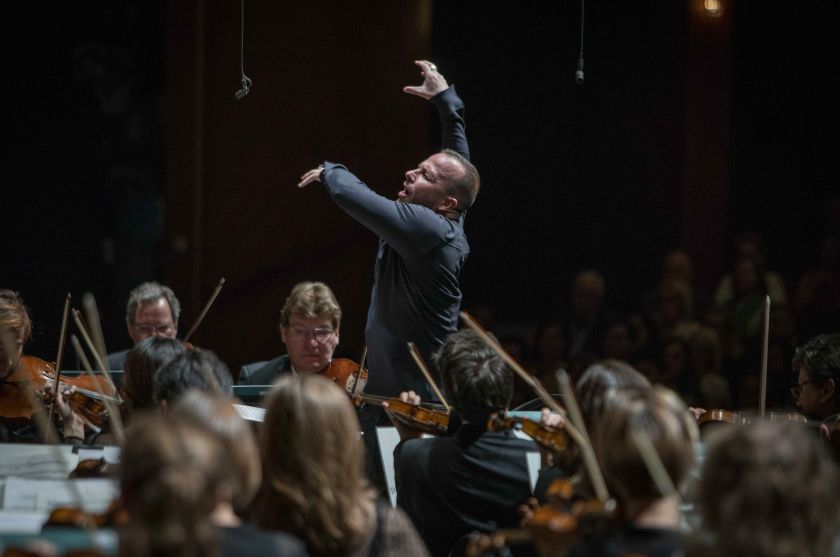
Messages and Content. Even Ludwig van Beethoven had worked hard at reconciling the apparently irreconcilable: for his “Sinfonia pastorale”, which is full of pointers regarding content, he took the precaution of noting on the title page: “More an expression of feeling than painting”. The fact that his symphonies were always about messages and content, rather than mere artful toying with forms, will be illustrated this year in Salzburg when the original-sound pioneer Jordi Savall and his ensemble Le Concert des Nations perform on 6 and 9 August, working their way from the earliest symphonies written shortly after 1800 to the Ninth of 1824. The explosive powers inherent and bundled in the Ninth were to explode in Paris just a few years after Beethoven’s death.
There, Hector Berlioz, impervious to the shocking effect this would have on the audience, turned his personal feelings, or more specifically, a tragic love story and its nightmarish psychological aftermath, into the five-movement “Symphonie fantastique” (to be heard from the Vienna Philharmonic under Yannick Nézet-Séguin on 29 August).
This work broke the dam. The symphony had become the plaything of emotions: Berlioz’ companion-in-arms Franz Liszt coined the term “symphonic poem”. This was followed by several masterworks seeking to combine classical form with richness in content. There are indisputable peaks among them, for example the Alpine Symphony by Richard Strauss (conducted by Gustavo Dudamel on 24/25 August), illustrating the joys of an Alpine hike while cognizant of its metaphysical dimension; bear in mind that a sketch version of this work was entitled Der Antichrist, taking a leaf from Nietzsche – and redefining the symphonic form in one great, almost 50-minute arch.
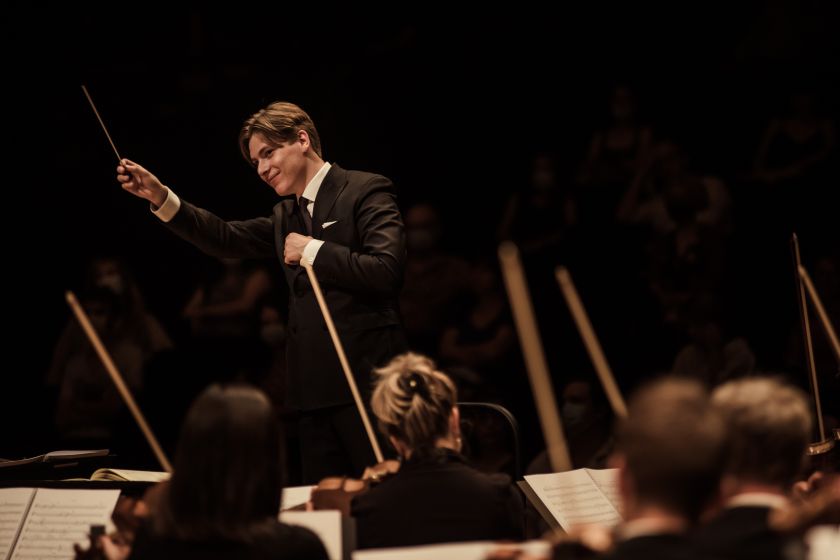
Picturesque Recounting. Arnold Schoenberg did something similar, conceiving his Opus 5, Pelleas und Melisande, in a thoroughly symphonic vein, bundling a picturesque recounting of the individual moments of Maurice Maeterlinck’s eponymous play in one movement lasting three quarters of an hour without interruption. The story is familiar to us from a stage work by Claude Debussy as well. Schoenberg transformed it into a kind of theatre for the inner eye, structured like a sonata form magnified to an extreme degree. Dmitri Shostakovich’s Fifth Symphony seems less experimental in terms of architecture – the result of a false withdrawal. It was a pretence because the Russian master had presented a radical concept of modern reinterpretation and exaltation of the classic symphonic form in his Fourth Symphony. This was a composition whose avant-garde spirit ran contrary to all the cultural-political precepts of Stalin’s terror regime, and it was not even allowed to have its world premiere.
In his Fifth, Shostakovich answered his critics, presenting an apparently conventional work – whose subtexts, however, speak eloquently of the composer’s personal situation, of the trials and tribulations of the artist in times of oppression. This, however, is a challenging point for the conductor to drive home to the audience almost 100 years later: in Salzburg, this task awaits the much-acclaimed young Klaus Mäkelä, who will perform the symphony on 21 August with the Oslo Philharmonic at the Felsenreitschule. Three days later, the Gustav Mahler Youth Orchestra under Ingo Metzmacher offers not only works by Beethoven, Nono and Wagner, but also a rare encounter with Arnold Schoenberg’s Orchestral Pieces Op. 16, performed by the originally intended enormous cast. This is music which suggests that ultimately, the only relevant issue is personal expression, without any view to classical formal structures: an attempt to compose for the possibilities of a large orchestra, in opposition to the classical and romantic tradition. At that point, we have truly left the symphony behind…
Wilhelm Sinkovicz
Translation: Alexa Nieschlag
First published on 11.05.2024 in Die Presse Kultur Spezial: Salzburg Festival
